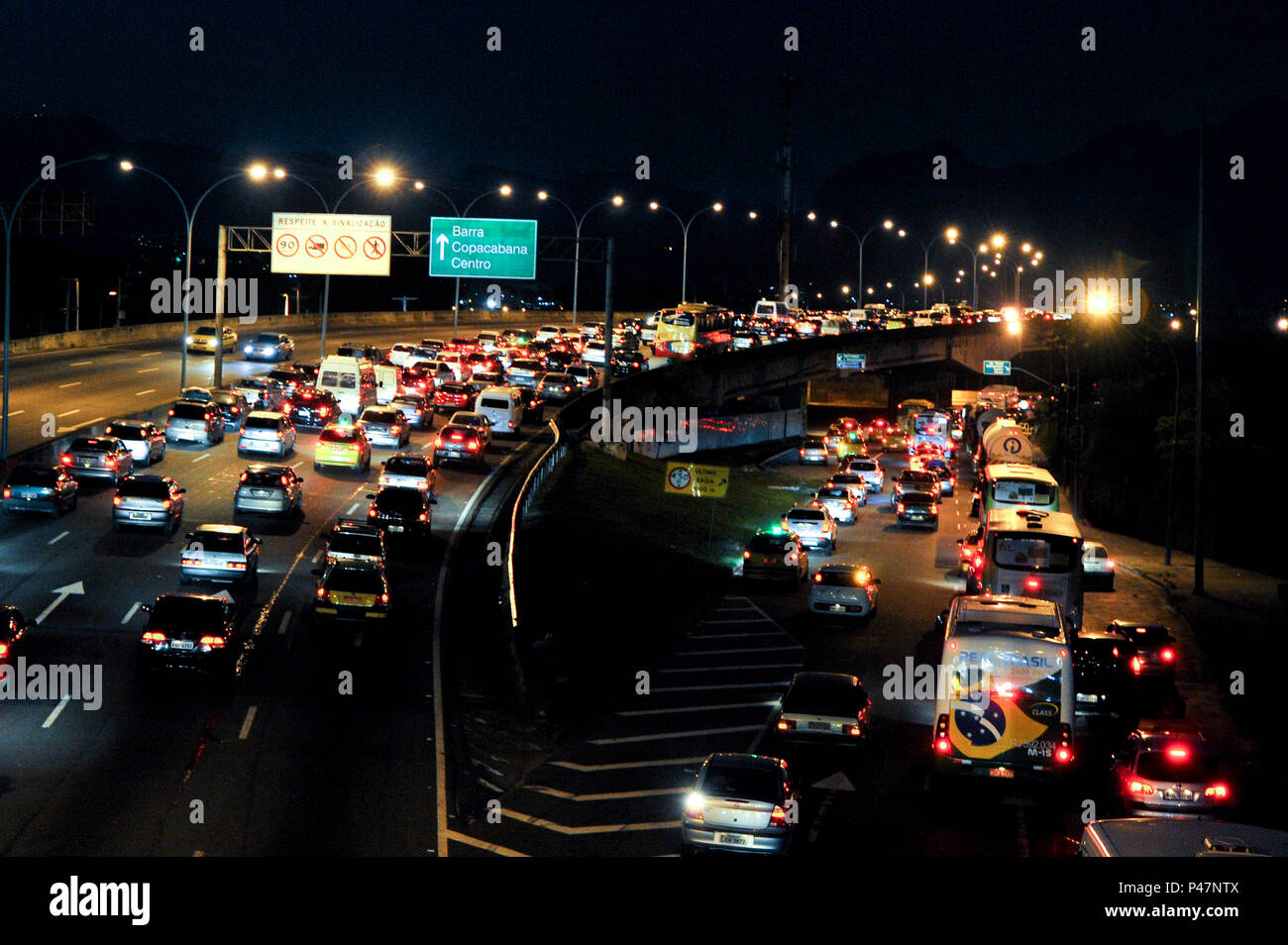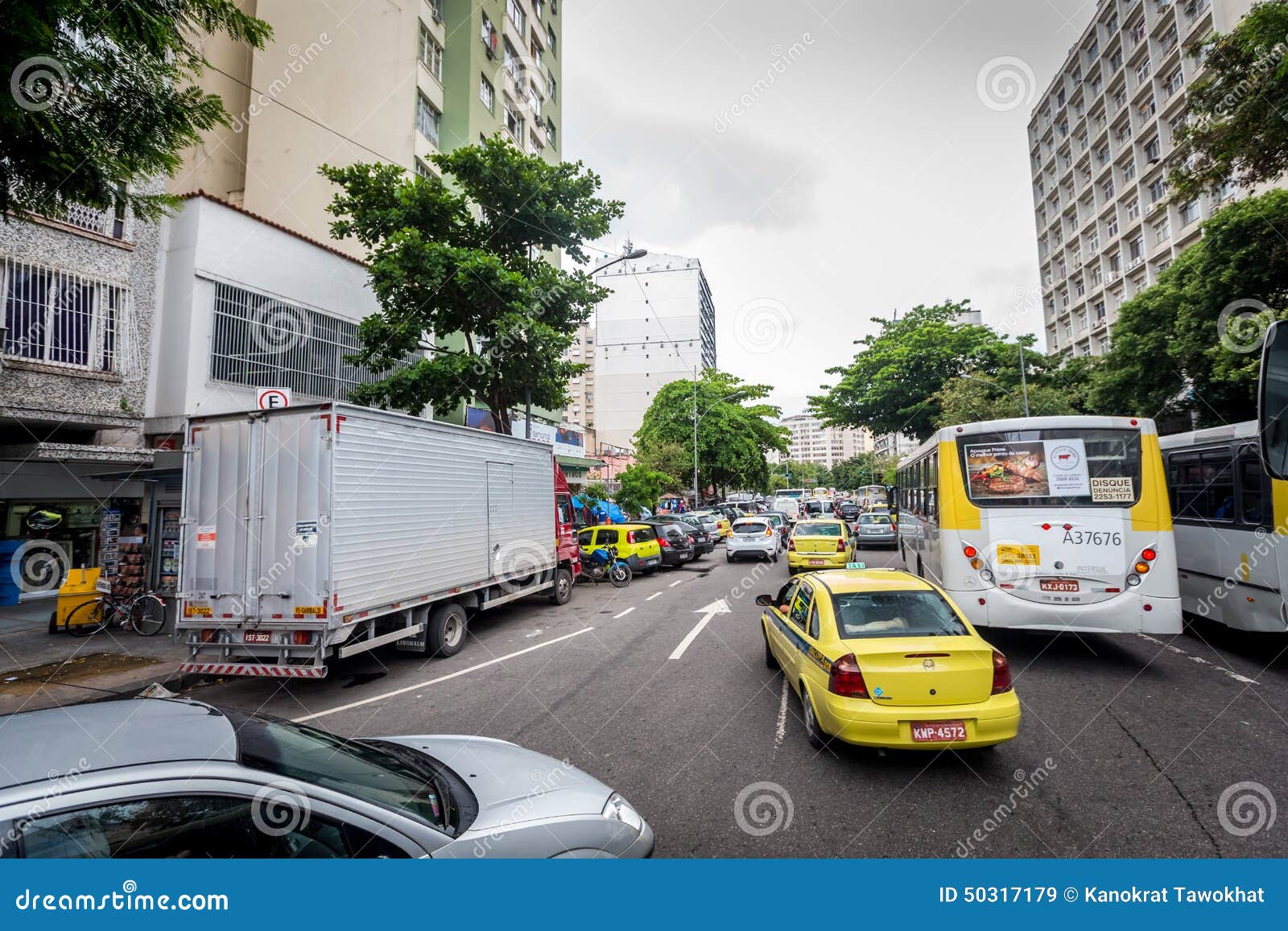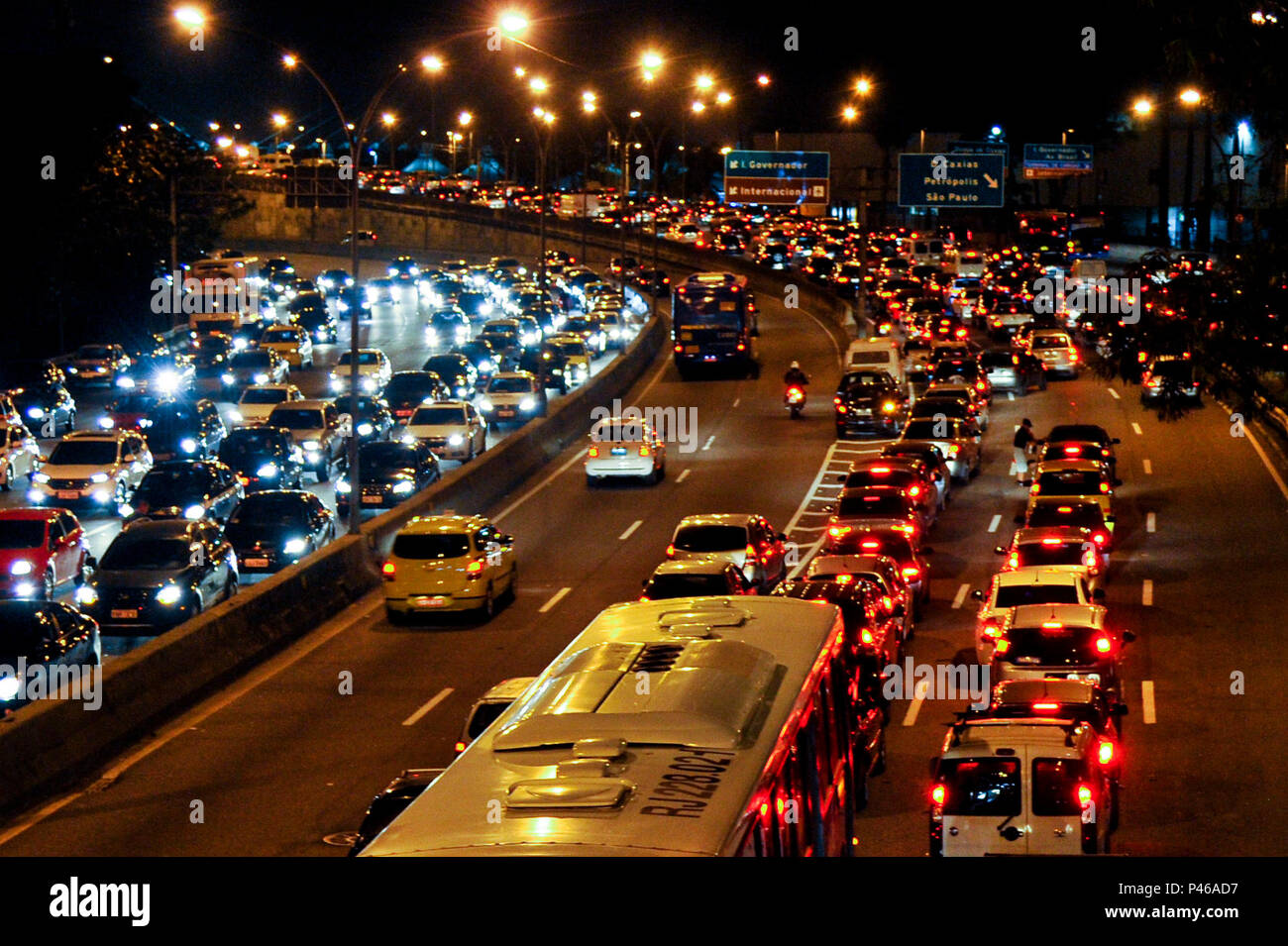Rio de Janeiro, a city renowned for its breathtaking landscapes, vibrant culture, and iconic landmarks, also presents a unique challenge for its residents and visitors: its dynamic traffic, often referred to as "Transito Rio." Navigating the intricate web of streets, avenues, and tunnels in this bustling metropolis requires more than just a map; it demands an understanding of the city's sophisticated traffic management systems, real-time information, and local regulations. This comprehensive guide delves into the heart of Rio's traffic, offering insights and practical advice to help you move smoothly through the Marvelous City.
From the daily commute to exploring tourist attractions, understanding "Transito Rio" is essential for an efficient and stress-free experience. This article will explore the technologies and initiatives put in place by the city, such as the groundbreaking Centro de Operações Rio (COR) and the Area Traffic Control (CTA), alongside popular citizen-led solutions like Waze. We'll also cover crucial aspects of traffic laws, how to address fines, and the invaluable role of the 1746 Rio app, ensuring you're well-equipped to tackle the urban jungle.
Table of Contents
- Understanding 'Transito Rio': More Than Just Traffic
- The Brains Behind Rio's Roads: The COR and CTA
- Leveraging Technology for Real-Time 'Transito Rio' Updates
- Navigating Rio's Traffic Laws: What You Need to Know
- Dealing with Fines and Infractions in Rio de Janeiro
- The 1746 Rio App: Connecting Citizens to the City
- Beyond the Commute: Unique Aspects of Rio's Roadways
- Future of Urban Mobility and 'Transito Rio'
Understanding 'Transito Rio': More Than Just Traffic
What is 'Transito Rio'?
The term "Transito Rio" literally translates to "Rio traffic," but in common parlance, it encompasses the entire ecosystem of mobility within the city of Rio de Janeiro. This includes everything from the flow of vehicles and public transport to pedestrian movement and the sophisticated systems in place to manage it all. Understanding "Transito Rio" means grasping the complex interplay of infrastructure, technology, human behavior, and the daily rhythm of a city that never truly sleeps.
Rio's topography, with its mountains, beaches, and lagoons, naturally funnels traffic into specific corridors, often leading to bottlenecks. The city's growth, coupled with an increasing number of vehicles, has made efficient traffic management a top priority. This is where the city's investment in smart urban solutions comes into play, aiming to optimize routes and reduce travel times for everyone navigating the city.
The Daily Challenge for Cariocas
For millions of Cariocas (residents of Rio), "Transito Rio" is a daily reality. Commuting from the North Zone to the South Zone, or from the West Zone to the city center, can involve significant travel times, especially during peak hours. The challenge is not just about getting from point A to point B, but doing so efficiently and predictably. This is why real-time information and reliable navigation tools have become indispensable.
The impact of traffic extends beyond mere inconvenience. It affects productivity, quality of life, and even the local economy. Long commutes mean less time for family, leisure, or personal development. Businesses face delays in logistics and increased operational costs. Therefore, effective management of "Transito Rio" is not just about easing congestion; it's about enhancing the overall well-being and economic vitality of the city.
The Brains Behind Rio's Roads: The COR and CTA
At the heart of Rio de Janeiro's sophisticated traffic management lies a powerful synergy between advanced technology and human expertise. Two key entities, the Centro de Operações Rio (COR) and the Controle de Tráfego por Área (CTA), work tirelessly to monitor, integrate, and optimize the flow of "Transito Rio" across the city.
The Centre of Operations Rio (COR): A Legacy of Efficiency
The Centro de Operações Rio (COR) stands as a testament to Rio's commitment to smart urban management. Inaugurated in December 2010, the COR was notably the first Olympic equipment delivered by the Rio City Hall to the city, a significant achievement ahead of the 2016 Olympic Games. Its legacy, however, extends far beyond the Olympics; it remains operational 24 hours a day, seven days a week, serving as the nerve center for the city's essential services.
The COR's primary function is to monitor and integrate various critical areas of Rio de Janeiro. This includes not only traffic and public transport but also weather conditions, public safety, and emergency services. By consolidating data from hundreds of cameras, sensors, and various municipal agencies, the COR provides a holistic view of the city's operational status. This comprehensive oversight allows for rapid response to incidents, proactive management of potential problems, and informed decision-making to keep the city running smoothly, directly impacting the fluidity of "Transito Rio."
For instance, if a major accident occurs, the COR can immediately dispatch emergency services, reroute traffic, and update digital signage and navigation apps to warn drivers. This integrated approach minimizes disruption and ensures that critical information reaches the right people at the right time.
Area Traffic Control (CTA): Optimizing Flow in Real-Time
Complementing the COR's overarching surveillance is the Controle de Tráfego por Área (CTA), or Area Traffic Control. The CTA is specifically dedicated to monitoring "Transito Rio" in real-time, focusing on the dynamic flow of vehicles on the city's main thoroughfares. Its core objective is to assist in reducing travel times on Rio's principal roads, making daily commutes more efficient for thousands of drivers.
The CTA employs advanced traffic light synchronization systems, adapting light timings based on current traffic density and flow patterns. Through a network of sensors embedded in the roads and surveillance cameras, the CTA gathers precise data on vehicle movement. This data is then analyzed to make instantaneous adjustments to traffic signals, prioritizing routes where congestion is building or facilitating movement through critical intersections.
The continuous monitoring and adaptive control exercised by the CTA are crucial for managing the unpredictable nature of urban traffic. Whether it's a sudden surge in vehicles due to an event or a slowdown caused by adverse weather, the CTA's ability to react swiftly helps maintain order and prevent gridlock, significantly improving the experience of navigating "Transito Rio."
Leveraging Technology for Real-Time 'Transito Rio' Updates
In a city as dynamic as Rio, real-time information is paramount for anyone navigating "Transito Rio." Fortunately, a combination of popular navigation apps and official city channels provides citizens with up-to-the-minute updates, empowering them to make informed decisions about their routes.
Waze and Beyond: Your Digital Co-Pilot
For many drivers in Rio, apps like Waze have become indispensable digital co-pilots. These community-driven platforms allow users to track "Transito Rio" in real-time through speed maps, reporting accidents, hazards, police presence, and road closures. This collaborative approach means that information is constantly updated by thousands of users, offering a highly accurate and immediate picture of road conditions.
The ability to accompany the traffic now in Rio de Janeiro through Waze's speed map allows drivers to proactively avoid congested areas, discover alternative routes, and estimate arrival times with greater precision. While incredibly useful, it's worth noting a specific regulation from the Brazilian Traffic Code (CTB): configuring traffic applications like GPS while driving is considered a serious infraction, carrying a fine of R$ 293.47 and 7 points on the driver's license (CNH). This highlights the importance of setting up your navigation before you start driving or having a passenger assist.
Official Channels: Staying Informed
Beyond third-party apps, the Rio City Hall and its associated departments provide a wealth of official information regarding "Transito Rio." You can accompany real-time traffic news in Rio through dedicated websites and social media channels. These platforms often provide live traffic conditions free of charge, offering updates directly from the city's monitoring centers like the COR and CTA.
For instance, some platforms have been recognized for their excellence in providing traffic and weather information for Rio de Janeiro, even earning top accolades like being among the top 3+ in the iBest 2023 award. They often share real-time information through stories on social media, making it easy for citizens to stay updated on the go. The city's official website also often features a list of useful phone numbers for those who face city traffic every day, providing direct lines for inquiries or assistance related to road conditions and incidents.
Navigating Rio's Traffic Laws: What You Need to Know
Understanding and adhering to local traffic laws is crucial for a safe and hassle-free experience navigating "Transito Rio." Brazilian traffic laws, governed by the CTB (Código de Trânsito Brasileiro), are comprehensive, and specific regulations apply within the municipality of Rio de Janeiro. Beyond general rules like speed limits and right-of-way, there are nuances that drivers should be aware of.
One notable aspect, as mentioned, is the prohibition of configuring GPS or traffic applications while driving. This regulation aims to prevent distracted driving, a major cause of accidents. The penalty for this serious infraction underscores the importance of focusing solely on the road.
Another interesting detail, though less common for daily commuters but relevant for vehicle enthusiasts, pertains to collector vehicles. CONTRAN Resolution No. 887/2021 brought back the black background plates with white characters for collection vehicles. To qualify, a vehicle must be more than 30 years old and maintain at least 80% originality. While this doesn't directly impact daily "Transito Rio" flow, it's an example of the specific regulations that govern different vehicle categories within the broader traffic code.
Drivers should always carry their valid driver's license (CNH) and vehicle registration documents. Familiarity with local signage, parking regulations, and specific rules for bus lanes or restricted zones is also essential to avoid fines and ensure smooth travel.
Dealing with Fines and Infractions in Rio de Janeiro
Even the most careful drivers can sometimes incur traffic fines. Understanding the process for addressing these infractions in Rio de Janeiro is important. The Municipal Secretariat of Transport (SMTR) is the primary body responsible for fines and infractions committed within the city of Rio de Janeiro.
If you receive a traffic ticket, the first step is to verify its origin. The Municipal Secretariat of Transport only handles fines/infractions that were committed in the city of Rio de Janeiro. To confirm this, the citizen should check the DETRAN code (auto de infração, or infraction notice). Specifically, if the fine code begins with the letters "B" and "V," it typically indicates an infraction issued by the municipal traffic agents of Rio de Janeiro. Fines issued by state or federal authorities would have different codes and would need to be addressed with the respective agencies (e.g., DETRAN for state, PRF for federal highways).
The process for appealing a fine or paying it will be detailed on the infraction notice itself or can be found on the SMTR's official website. It's crucial to adhere to the deadlines for appeals or payment to avoid additional penalties or complications. Staying informed about the rules and knowing how to navigate the bureaucratic process can save you time and money when dealing with "Transito Rio" related infractions.
The 1746 Rio App: Connecting Citizens to the City
Beyond traffic-specific applications, the Rio City Hall has developed a comprehensive digital tool to facilitate citizen interaction with municipal services: the 1746 Rio app. This application serves as a vital bridge, connecting citizens directly to the Rio City Hall, making it easier to access information and request public services.
The 1746 app is incredibly versatile, allowing users to request more than a thousand types of municipal public information and services. This includes a wide array of categories, such as reporting issues with public lighting, requesting tree pruning, reporting illegal dumping, or inquiring about municipal taxes. Crucially, it also allows citizens to track the progress of their requests, providing transparency and accountability from the city administration.
While not exclusively for "Transito Rio" issues, the 1746 app can be indirectly useful. For instance, if you encounter a non-functioning traffic light, a pothole that could cause an accident, or debris on the road, you can report these issues through the app. These reports, once processed, contribute to the overall safety and efficiency of "Transito Rio" by prompting the city to address infrastructure problems that could impede traffic flow or pose hazards.
The availability of such a robust platform demonstrates Rio's commitment to leveraging technology for improved urban governance and citizen engagement, contributing to a better quality of life for all its residents and visitors navigating the city.
Beyond the Commute: Unique Aspects of Rio's Roadways
While the focus of "Transito Rio" often revolves around daily commuting and congestion, the city's roadways also present unique characteristics and regulations that add to its distinct urban fabric. Understanding these less common aspects can provide a more complete picture of navigating Rio.
One such interesting detail, as highlighted in the provided data, is the regulation concerning collector vehicles. The return of black background plates with white characters for vehicles over 30 years old and maintaining 80% originality, as per CONTRAN Resolution No. 887/2021, adds a touch of classic car culture to Rio's streets. While these vehicles don't typically contribute to daily congestion, their presence on the roads is a unique sight and reflects a specific niche within the broader "Transito Rio" landscape. It showcases how even seemingly minor regulations contribute to the rich tapestry of urban mobility.
Furthermore, Rio's unique geography often necessitates innovative engineering solutions. Tunnels carved through mountains, elevated highways traversing lagoons, and bridges connecting islands are all integral parts of the "Transito Rio" network. These engineering marvels are designed to optimize flow in challenging terrain, but they also require specific attention from drivers, especially regarding speed limits and lane discipline.
The city also hosts numerous events, from major sporting competitions to vibrant street carnivals, which frequently lead to temporary road closures and significant changes in traffic patterns. Staying informed about these events and their impact on "Transito Rio" is crucial, often communicated through the same real-time channels discussed earlier.
Future of Urban Mobility and 'Transito Rio'
The future of "Transito Rio" is poised for continued evolution, driven by technological advancements, urban planning initiatives, and a growing emphasis on sustainable mobility. Rio de Janeiro, like many major global cities, faces the ongoing challenge of balancing urban growth with efficient and environmentally friendly transportation solutions.
The continued development and integration of smart city technologies, building upon the foundations laid by the COR and CTA, will play a pivotal role. We can expect even more sophisticated AI-driven traffic management systems, predictive analytics to anticipate congestion, and seamless integration with public transport networks. The goal is to create a truly interconnected urban mobility ecosystem where drivers, cyclists, pedestrians, and public transport users can navigate the city with unprecedented ease and efficiency.
Furthermore, there's a growing push towards sustainable transportation options. Investments in expanding metro lines, improving bus rapid transit (BRT) corridors, and promoting cycling infrastructure are all part of a broader strategy to reduce reliance on private vehicles. Encouraging shared mobility services, electric vehicles, and micro-mobility solutions will also contribute to a greener and less congested "Transito Rio."
The city's commitment to continuous improvement, as evidenced by its embrace of technology and citizen engagement platforms like the 1746 app, suggests a promising outlook for urban mobility. While the challenges of "Transito Rio" will always exist in a bustling metropolis, the ongoing efforts to optimize, inform, and innovate aim to make navigating Rio de Janeiro a more predictable, pleasant, and sustainable experience for everyone.
Conclusion
Navigating "Transito Rio" is an intrinsic part of the Rio de Janeiro experience, whether you're a local commuter or a curious visitor. As we've explored, the city has invested significantly in advanced infrastructure and technology, from the 24/7 operations of the Centro de Operações Rio (COR) and the real-time adjustments of the Area Traffic Control (CTA), to sophisticated applications like Waze that provide immediate updates on road conditions. Understanding these systems and leveraging the available tools can transform your journey through the Marvelous City from a potential headache into a manageable, even predictable, part of your day.
Remember to always stay informed through official city channels and reliable navigation apps, adhere to local traffic laws – including the important rule about not configuring GPS while driving – and know how to address any potential infractions. The 1746 Rio app further empowers citizens, connecting them directly to municipal services that contribute to overall urban efficiency. As Rio continues to evolve, its commitment to smart urban mobility promises an even smoother "Transito Rio" in the years to come.
What are your experiences with "Transito Rio"? Share your tips, challenges, or success stories in the comments below! If you found this guide helpful, consider sharing it with others who might benefit, and explore our other articles for more insights into navigating life in Rio de Janeiro.


